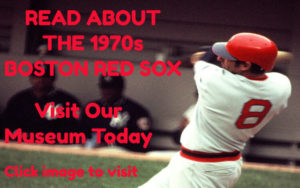1992 Boston Red Sox: The Ominous Start Of The Butch Hobson Era
The Red Sox made an unpopular decision when they let go of manager Joe Morgan, who had led the team to a successful four-year run that included AL East titles in 1988 and 1990. The 1992 Boston Red Sox would be led by Butch Hobson, who had been a popular player in the late 1970s. But his tenure in the dugout got off to a poor start and never really gained steam.
It wasn’t that the front office didn’t go all-in. Boston signed Minnesota ace’s lefty starter Frank Viola on the free-agent market and paired him up with Roger Clemens in the rotation. The result was a staff that would finish with the second-best ERA in the American League in ‘92. Clemens was vintage, with 18 wins and a 2.41 ERA. Viola went 13-12 with a 3.44 ERA. The two pitchers combined for 67 starts and nearly 500 innings.
The rest of the rotation, ranging from Joe Hesketh to John Dopson to Mike Gardner to Danny Darwin was average, but given the workhorses at the top, was more than acceptable. Greg Harris did good work out of the bullpen, as did Darwin who shuttled back and forth through the season.
But it was the offense, normally a given at Fenway Park, that fell apart. Wade Boggs posted a .353 on-base percentage, but at 34-years-old, his batting average slipped to .259. Tom Brunansky finished with a stat line of .354 OBP/.445 slugging percentage, hit 15 home runs and drove in 74 runs. That’s a nice enough year…but when it’s the best year of anyone in your lineup it’s a sign of trouble.
And trouble is what the Red Sox had. Tony Pena and Jack Clark were well past their prime. Mo Vaughn, a slugging first baseman who would win the MVP award in 1995, was still having growing pains. Ellis Burks dealt with a variety of injuries and only played 66 games. Jody Reed and Billy Hatcher each had bad years. Boston finished 13th in the American League in runs scored.
The Red Sox played respectable baseball early on. They split eight games with the Blue Jays, Orioles and Brewers, who were the AL East’s three best teams in 1992 (prior to 1994 each league was split into just an East & West, and Milwaukee was an American League team through 1997). By Memorial Day, the Sox were 20-19 and within 4 ½ games of the division lead.
They came out of the holiday weekend and swept a road series with the Angels, giving up only five runs in three games and nudging to within 2 ½ games of first place. But that would be the 1992 baseball season’s high point in Boston. That West Coast trip ended with five losses in six games against the Mariners and A’s.
The Red Sox continued to hang tough against the elite of their division, splitting ten games with Toronto, Baltimore and Milwaukee. But Boston was still hanging around .500, while the upper crust was getting hot. The Sox were ten back at the All-Star break.
It would be a stretch to say anyone in New England was counting on a big second half push, but if there was, they had their illusions shattered quickly. Boston lost nine of their first fourteen games out of the break against AL West teams. Closer Jeff Reardon, struggling in any case, was traded to Atlanta, where he continued his struggles all the way through the World Series. Boston lost three of four to Baltimore. And the Sox dropped three of four in mid-August to Milwaukee. By Labor Day, the Red Sox were 63-73 and well off the pace.
Today in New England you’d just switch the focus to football, but the Patriots were a bad team at this point in their history. The Red Sox would have to do for September sports. And they kept collapsing, losing their first five series post-Labor Day. The final record was 73-89 and dead last in a seven-team AL East.
This would be the low point of the short Hobson era, but it never really got going. Boston made a run at .500 in 1993 before settling in at 80-82. And they were seven games under .500 in August 1994 when the strike hit and put everyone in Red Sox Nation out of their misery. Hobson was replaced prior to 1995, when the franchise got back on top and won the AL East.


